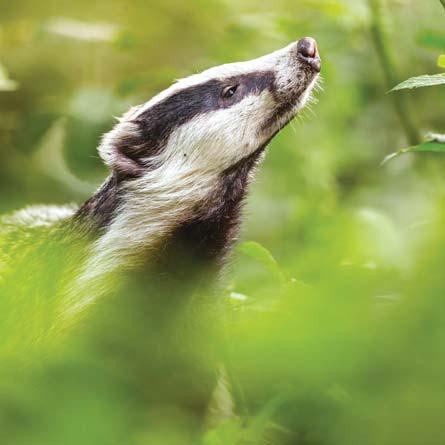
A tiger’s striped coat blends into the surrounding jungle as the muscular big cat prepares to pounce. In the ocean, an orca coordinates with its pod (group) to outsmart its prey. In the sky, a peregrine falcon, a soaring solo slayer, suddenly dives from dizzying heights at over 200 miles per hour to strike an unsuspecting bird in mid air. These are some of the animal kingdom’s top predators, and each has a unique set of skills and strategies to bring down their prey. Predators are any animals that hunt and kill another species for food. None kill for thrills, it’s simply a matter of survival.
The food chain starts with plants and tiny creatures that small animals eat. These, in turn, become meals for larger carnivores (meat-eaters). At the very top of the chain are the apex predators. These are nature’s ultimate hunters – the creatures that have no natural enemies. Their unmatched hunting skills mean that they rule their habitats. If you’re a small, vulnerable animal you would be keen to avoid them.
Here’s the bad news, though. Apex predators are almost everywhere – in hot deserts, icy polar climates, rainforests, lakes and oceans, on mountain tops and even underground. Badgers are the UK’s largest land predators, mostly burrowing into the ground to catch creatures that live below the surface – a menu that may include several hundred earthworms a night.
Super-senses
Apex predators have their own specially adapted senses that are practically superpowers. Tigers and leopards have superior night vision for hunting under cover of darkness, while badgers use their superior sense of smell to target prey.
This story is from the Issue 78 edition of The Week Junior Science+Nature UK.
Start your 7-day Magzter GOLD free trial to access thousands of curated premium stories, and 9,000+ magazines and newspapers.
Already a subscriber ? Sign In
This story is from the Issue 78 edition of The Week Junior Science+Nature UK.
Start your 7-day Magzter GOLD free trial to access thousands of curated premium stories, and 9,000+ magazines and newspapers.
Already a subscriber? Sign In

Camera Obscura
Imagine stepping inside a dark room, where the only source of light comes through one small hole in the wall.

MANCHESTER SCIENCE FESTIVAL
From 18-27 October, shoppers at the Arndale shopping centre in Manchester, England, will face a giant spider.

Should musicians stop touring?
Multiple concerts travelling around the world have a big impact on the environment.

Are ghosts real?
Plenty of people believe in ghosts, but it's hard to find proof.

SMASH STEREOTYPES
In an extract from his prize-winning book, scientist and writer Adam Rutherford shows you how to use the power of science to fight racism. This chapter, titled Myth-Busting, is all about sport.

Animal awareness
What would it feel like to be another animal?

Hamza Yassin
Go behind the camera with a wildlife filmmaker.

WILDLIFE WATCH
Ben Hoare goes on a safari from his sofa to discover how nature documentaries are made.

Big bum breakthrough
A team of researchers who found out that mammals can breathe through their bottoms have won a prize at the lg Nobel awards.

A jaw-dropping undersea snap
A photograph of a Bryde's whale feeding on a heart-shaped \"bait ball\" of sardines has won the Ocean Photographer of the Year contest.